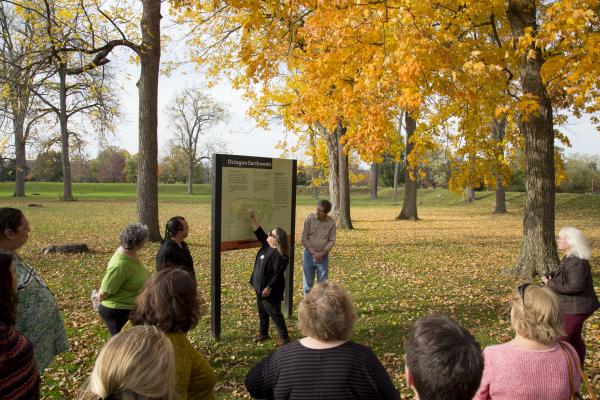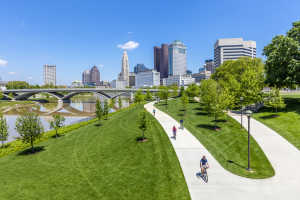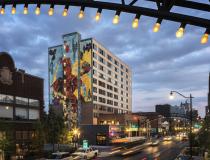National Native American Heritage Month is recognized annually in November and celebrates the culture, heritage and experience of Indigenous people both historically and those in America today.
Between 13000 B.C. and 1843, Central Ohio was home to many groups of Native American cultures who constructed mounds and earthworks. The history of these cultures is a mystery to most, but there are still many sites around Columbus that offer a glimpse of these cultures.
Recently, Ohio's Hopewell Ceremonial Earthworks were officially recognized as the 25th UNESCO World Heritage Site in the U.S. UNESCO awards the designation to places deemed of universal importance and value to humankind. Read more about this prestigious designation.
Here are six destinations where you can see earthworks and artifacts that showcase Native American History around Columbus.
Mound City Group
About an hour south of Columbus along the Scioto River in Chillicothe, this vast site was a ceremonial center of the Hopewell people. The Mound City Group at the park is a 13-acre rectangular area enclosed by earthen walls 3-4 feet high. Inside are at least 25 mounds of varying sizes framed by a large earthen enclosure shaped like a rectangle with rounded corners. Archaeologists have found indications that a ceremonial road once connected the Newark and Chillicothe sites - arrow-straight, 200 feet wide and 60 miles long. Artifacts found at the site come from as far away as Yellowstone and the Gulf Coast, indicating that this was central to a widespread culture. One-hour tours occur daily at 10 a.m. and are highly recommended as an excellent orientation to the culture.

Newark Earthworks
The Newark Earthworks are the largest set of geometric earthen enclosures in the world, all about 45 minutes east of Columbus. The site used to encompass most of Newark; however today, only a few sections remain. These sections include the Great Circle, the Octagon, and the Wright Earthworks. The Octagon Earthwork consists of eight walls, each measuring 5-6 feet tall and 550 feet long, enclosing an area of 50 acres. The earthworks were a ceremonial center and a calendar aligned with the 18.6-year lunar cycle.
Seip Mound
A few miles away from the Mound City Group within the Hopewell Culture National Historic Park, this National Park Service site includes an enormous burial mound that measures 30 feet high by 240 feet long by 160 feet wide. The mound covered a large, three-chambered ceremonial hall or “Big House.” Inside the house, more than 100 people were laid to rest with some of the burials containing artifacts such as the clay face effigy and copper breastplates.

Serpent Mound
This awe-inspiring site is about an hour and 45 minutes away from Columbus, but worth the expedition. It's the largest effigy mound (mound shaped like an animal) in the world. Numerous artifacts have been found at the site, most pertaining to two different archaeological cultures: the Adena (800 BC-AD 100) and Fort Ancient (AD 1000-1500). The confusion around the date of the mound stems from varying radiocarbon dates from both the Adena and Fort Ancient cultures. Further research is needed to clarify the age of Serpent Mound.
Shrum Mound
Located within the city limits of Columbus, this mound stands 20 feet tall and 100 feet in diameter. Columbus was once scattered with hundreds of earthworks, but few remain - this is one of the best and easiest to access locally. Mound Street, in downtown Columbus, got its name from a prominent mound near the street's intersection with the High Street. Though the mound no longer stands, the clay from it was used to make the bricks that built many of Columbus' first buildings.

Ohio History Center
This museum near the Ohio Expo Center houses lots of artifacts from Ohio's past. The current exhibit about American Indians on display at the Ohio History Center focuses on the eight Hopewell sites that are part of the UNESCO World Heritage bid. The exhibit introduces visitors to the sites and exhibits selected artifacts from two of the sites that shed light on the types of activities that happened at these sites, in particular the practice of leaving ceremonial offerings.






